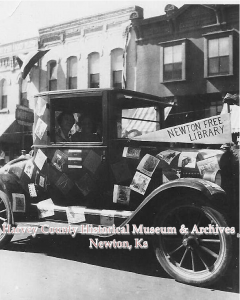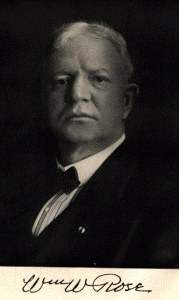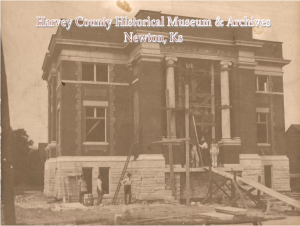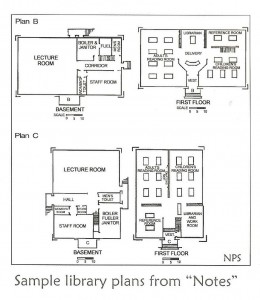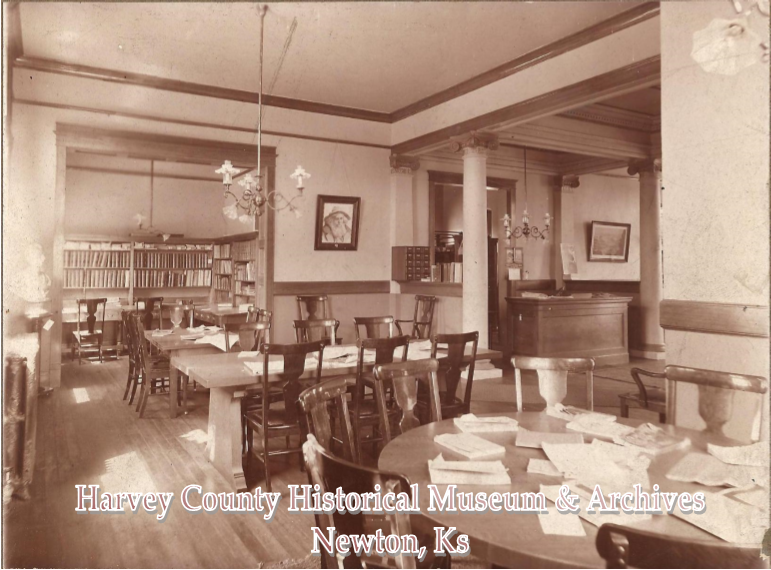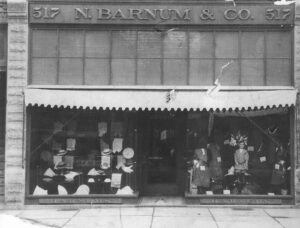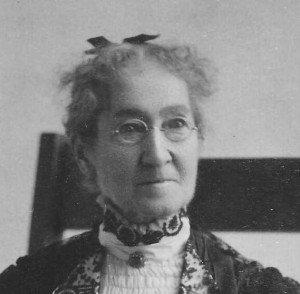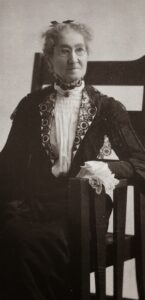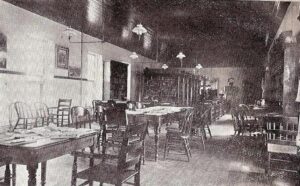by Kristine Schmucker, HCHM Curator
“We very much desire to have a building of our own, where we can keep up the library as it should be.” -J.W. Patterson, President, Newton Free Library, Letter to Andrew Carnegie, 17 February 1902.
On Saturday, May 3, we will celebrate the 110th birthday of the building that houses the Harvey County Historical Museum and Archives. A free event, all activities will take place in and around the Museum building from 2-4 pm. Join us for birthday cake, games and fun!
In 1901, the Newton Free Library Board began to think about a library building. Prior to this the library had been housed on the second floor in various buildings along Main. This was less than ideal. To grow as a library and serve the community, a building was needed. At the same time, Newton mayor, G.W. Young became aware that Andrew Carnegie, “American iron and steel manufacturer and philanthropist,” was providing money to communities to build libraries. Library board member, J.W. Patterson, contacted Carnegie to request funding.
A positive response came from James Bertram, Carnegie’s secretary.
“If the city of Newton pledges itself by resolution of Council to support a Free Public Library at a cost of not less than one thousand dollars a year and provides a suitable site, Mr. Carnegie will be glad to furnish ten thousand dollars for the erection of a free public library building.” -James Bertram, sec’ty to J.W. Patterson, President, Newton Free Library, March 14, 1902.
After some additional correspondence, Carnegie agreed to increase his financial gift to fifteen thousand dollars for the construction of the new library.
The Library Board then searched for the best location. For the next year, the Library Board and the City Council debated the proper location of the new building. Initially, five different locations were considered, but was soon narrowed to three sites. The Library Board favored a site at 2nd and Main. The City Council advocated for one of two locations; the corner of 6th and Poplar or the corner of 7th and Main. Despite elections and resolutions, the situation remained “snarled” until late December 1902 when the Library Board resolved to “express to the City Council our desire to cooperate with it in every way possible to ensure the speedy erection of the library on the above named site,” at the corner of 2nd and Main. The three lot site was donated by Newton businessman E.C. Lewellyn.
In the spring of 1903, plans moved forward. The library board hired noted Kansas City architect, William W. Rose and accepted the bid of $11,445 submitted by contractors Reikowsky and Bartel of Hutchinson. Bids were also accepted for the plumbing and gas from Mr. Hollinger and for steam fitting from Mr. Follet.
The original plans called for gas lighting, but at the August meeting, the Board voted to have the building wired for electricity. On January 12, 1904, architect Rose reported that the building was completed and that final payments could be issued to the contractors.
Like many Carnegie Libraries, the Newton Free Library was classical in style with masonry construction, two stories with a high base and steps that led to the front entrance. The first floor windows were set high on the facade.
Carnegie Library buildings typically featured large, open interior spaces with a reference desk located so that the librarian could see into several spaces. The layout reflected a commitment to providing public access and a move to professional staff.
The main floor of the Newton Free Library was devoted to reading rooms, a reference desk, and closed stacks.
- South Reading Room, 1904
- North Reading Room, 1904
The second floor was known as “Carnegie Hall” with a stage and “a neat little dressing room in the southeast corner.” The space was perfect for “dramatics” and other public meetings.
On Monday, March 14, 1904 the Evening Kansan-Republican announced;
“The Opening Today of the New Library Marks Another Epoch In Newton’s History”
The paper reported that “a constant stream of men, women and children visited the Carnegie Library” on opening day. The reading rooms were declared “the most beautiful with its handsomely finished walls , oak wood work and beautiful furniture.” The reporter concluded by wondering, “how the city or librarian ever managed without it so long . . . It is certainly a charming place to spend and hour . . . and will be a favorite retreat.”
Andrew Carnegie provided funds for libraries from 1883-1919 with most of the funding between 1901-1917. He contributed over $40 million dollars to communities in the United States with most grants awarded between $15 and 30,000 and 59 libraries were constructed in Kansas with the help of Carnegie.
To read about the first librarian at the Newton Free Library click here.
Watch for Part 2 of our series on the Carnegie Library building next week and plan to come celebrate on Saturday, May 3.
Sources
- HCHM Photo Archives
- Newton Weekly Kansan Republican; 16 January 1905.
- Evening Kansan Republican; 12 March 1904, 14 March 1904, 15 March 1904.
- “The Newton Free Library” in Newton Kansan 50th Anniversary 22 August 1922, p. 75.
- National Register of Historic Places Inventory – Nomination Form # 74000840, 1974.
- Allbaugh, Alden. “The Newton Public Library 100 Year History, 1886-1986” HCHM Archives.
- Connelley, William E. A Standard History of Kansas and Kansans. Chicago: Lewis Publishing Co., 1918. “William W. Rose”
- Diericks, Mary B. ,”The Architecture of Literacy Carnegie Libraries in the U.S.” National Trust for Historic Preservation November 3, 2006. http://www.carnegielibraries.pghfree.net/nthp/natltrust-presentation1.pdf
- Gardiner, Allen. Carnegie Legacy in Kansas Kansas State Library, 1985. http://skyways.lib.ks.us/carnegie/page115.html


